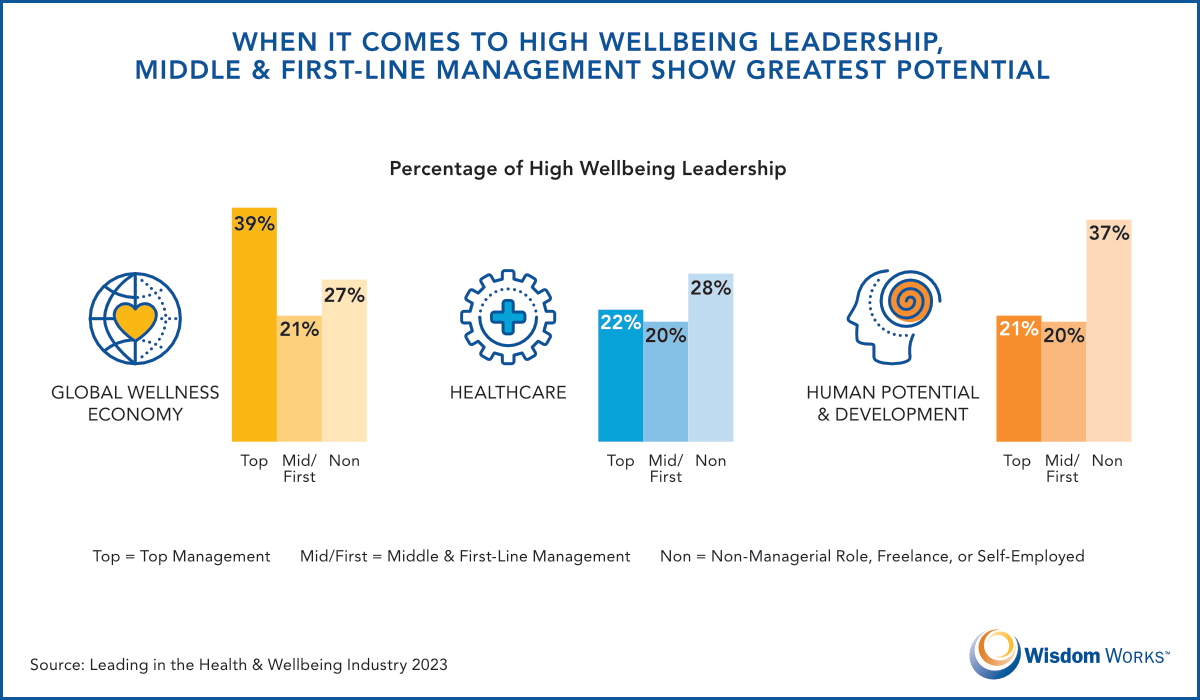Across the health and wellbeing industry, first- and mid-level managers reported lower wellbeing leadership as compared to other leadership levels. While they represented 35% of the study sample, these managers were only 28% of those leaders reporting high wellbeing leadership. Comparatively, top management represented 39% of the study sample yet 41% of leaders reporting high wellbeing leadership; non-managerial, self-employed, or freelance roles represented 26% of leaders in this study and were a disproportionately 31% of leaders reporting their wellbeing leadership as high.
This suggests that while mid-level and first-line management generally perceived themselves as able to meet their stresses and demands in life and work, they were not thriving while doing so. As this pool of leaders are the future of the industry, this finding highlights a critical opportunity for retaining and developing top talent by empowering middle-and first-line management to prioritize wellbeing.
Diving into the health and wellbeing industry sectors, this gap was most pronounced within the Global Wellness Economy and Human Potential and Development sectors. In the Global Wellness Economy, top management reported significantly higher wellbeing leadership than first- and mid-level managers. In Human Potential & Development, a greater percentage of non-managerial, self-employed, or freelance roles reported high wellbeing leadership.

To use content or findings from this report, please cite Leading in the Health & Wellbeing Industry 2023, Wisdom Works Group, Inc., or contact us for permission.





